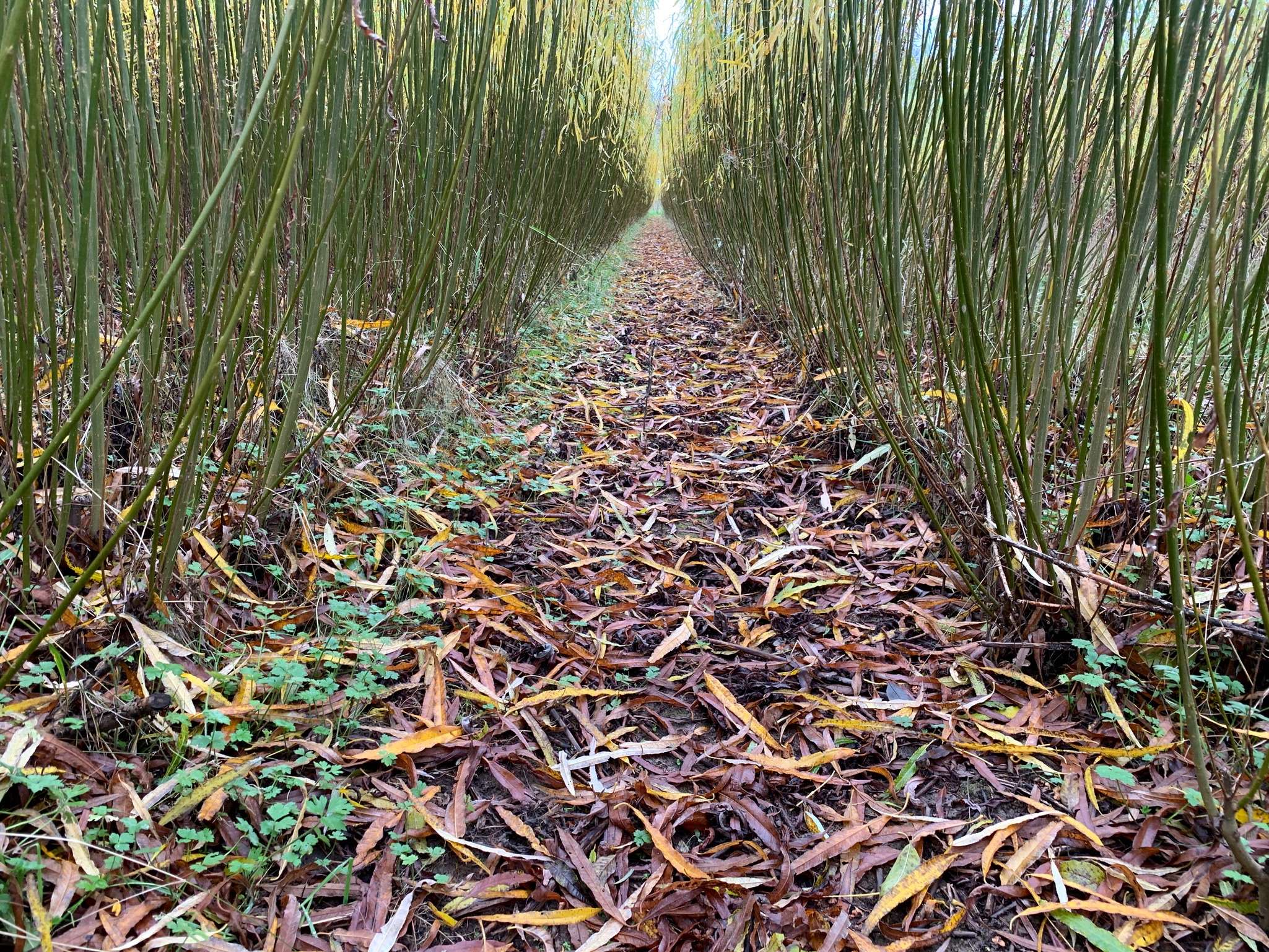Willow Coppice Planting: The Perennial Energy Crop of Choice
Helping landowners to grow large yield SRC willow crops quickly
Why plant willow?
Growing willow for profit in the UK
As a landowner, you may have land that is unusable for part of the year or that is unsuitable for traditional farming crops. Planting willow for biomass fills this space and, within just a few years, you will have an active harvest that can be coppiced. As a perennial, sustainable energy crop, you can also harvest willow rods for multiple years without the need to replant.
Willow can be grown in a range of conditions, including on areas that suffer occasional flooding and in poor soils. It can also be completely removed at the end of its life cycle, once again freeing up space for other uses if required.
The main use for willow right now is as wood chip for biomass and, as we head towards a net zero future, demand for more eco-friendly fuels will only increase. Research is also ongoing into many other uses of willow, including carbon capture and as industrial glue.
Willow Energy is actively working with a number of research institutions and universities to develop further exciting uses of this fast-growing shrub. We want to ensure that you as the landowner are getting the best returns on your coppice.
Find out more about growing willow on your land.

Planting willow for environmental purposes
Planting willow whips can greatly reduce the impact of flooding. The extensive root systems break up but hold onto the soil to allow water to drain more easily, with less soil erosion. The above-ground growth can prevent debris flowing back into waterways. Willow plantations also increase soil roughage to slow down the flow of surface water and reduce the risk of flash flooding.
As well as its uses in flood prevention, willow creates an excellent habitat for a variety of wildlife. Catkins, which are full of pollen, are a feast for bees and other insects, which in turn attract bird life. A coppice of willow can increase species diversity, providing shelter and food for a range of creatures.
Much of our focus on SRC willow is for use as a sustainable energy source. Because the willow is burned, people might think that CO2 removal is only temporary. However during a plantation’s lifetime, the dense root network is still converting atmospheric CO2 significant tonnages of soil carbon.


Willow coppice planting services
With our experience, knowledge and bespoke machinery, your new willow coppice will be planted in the most effective and efficient way to ensure healthy growth.
Our support for you doesn’t stop there either and we are constantly developing varieties of willow and use cases for this amazing plant. We work closely with big names such as Rothamsted Research (owners of the UK’s National Willow Collection), DEFRA, and a number of universities.
Willow Energy is looking towards the future to make sure the plant’s uses are recognised and popularised, increasing demand and growing your opportunities for profit.
How it works
- We supply willow whips that have been carefully chosen and developed in partnership with the National Willow Collection to produce the best harvest.
- The ground is prepared much as it is for traditional farm crops.
- Using our bespoke machinery, willow whips are planted quickly and effectively.
- The willow is left to grow for the next couple of years before it’s ready for harvesting. It should also be properly managed to ensure the best health.
When is the best time of year to plant willow in the UK?
In the UK, the best time to plant willow is in the spring, starting in April when the shrub is actively growing. Until then, our coppiced willow sticks are carefully preserved in cold storage.
Why choose us?
By working with us, you will benefit from:
- 10 years of experience growing, harvesting and managing willow coppices.
- A background in and ongoing involvement with farming.
- Our own machinery, developed specifically for willow coppice planting, supported by a background in engineering.
- Carefully selected willow varieties for hardiness and yield.
- An honest approach. Willow is a diverse shrub that can be planted on many types of land, but we are open about what you can expect based on your soil and the situation of your land. If we don’t think willow will be beneficial to you, we will tell you.
Get in touch today to discuss your SRC willow planting needs.

